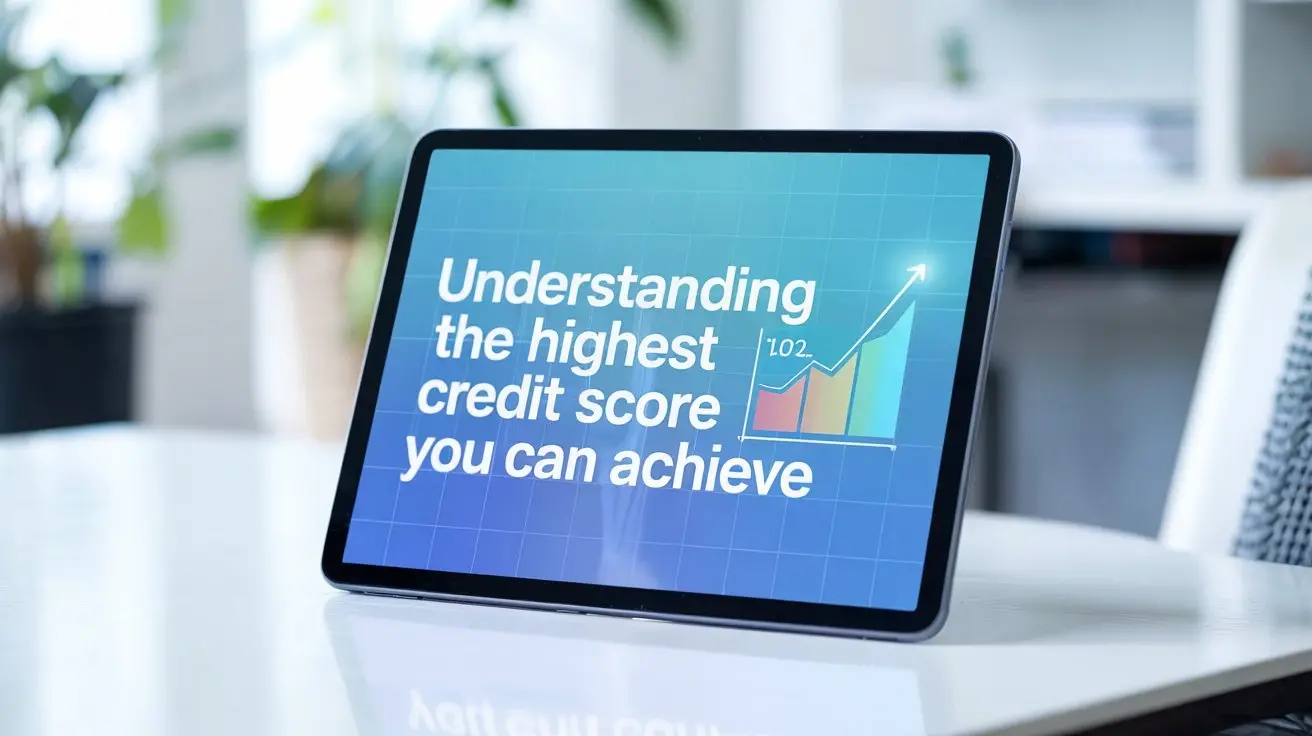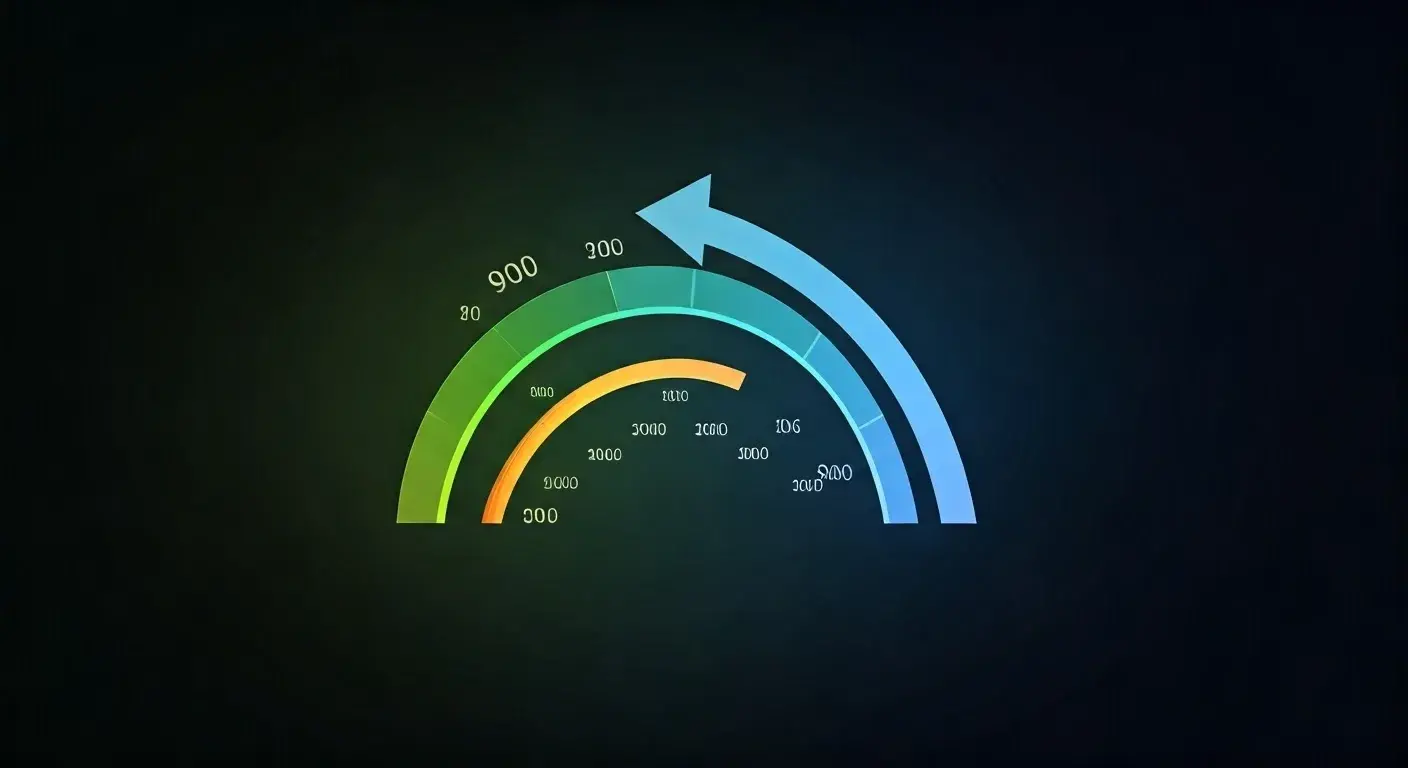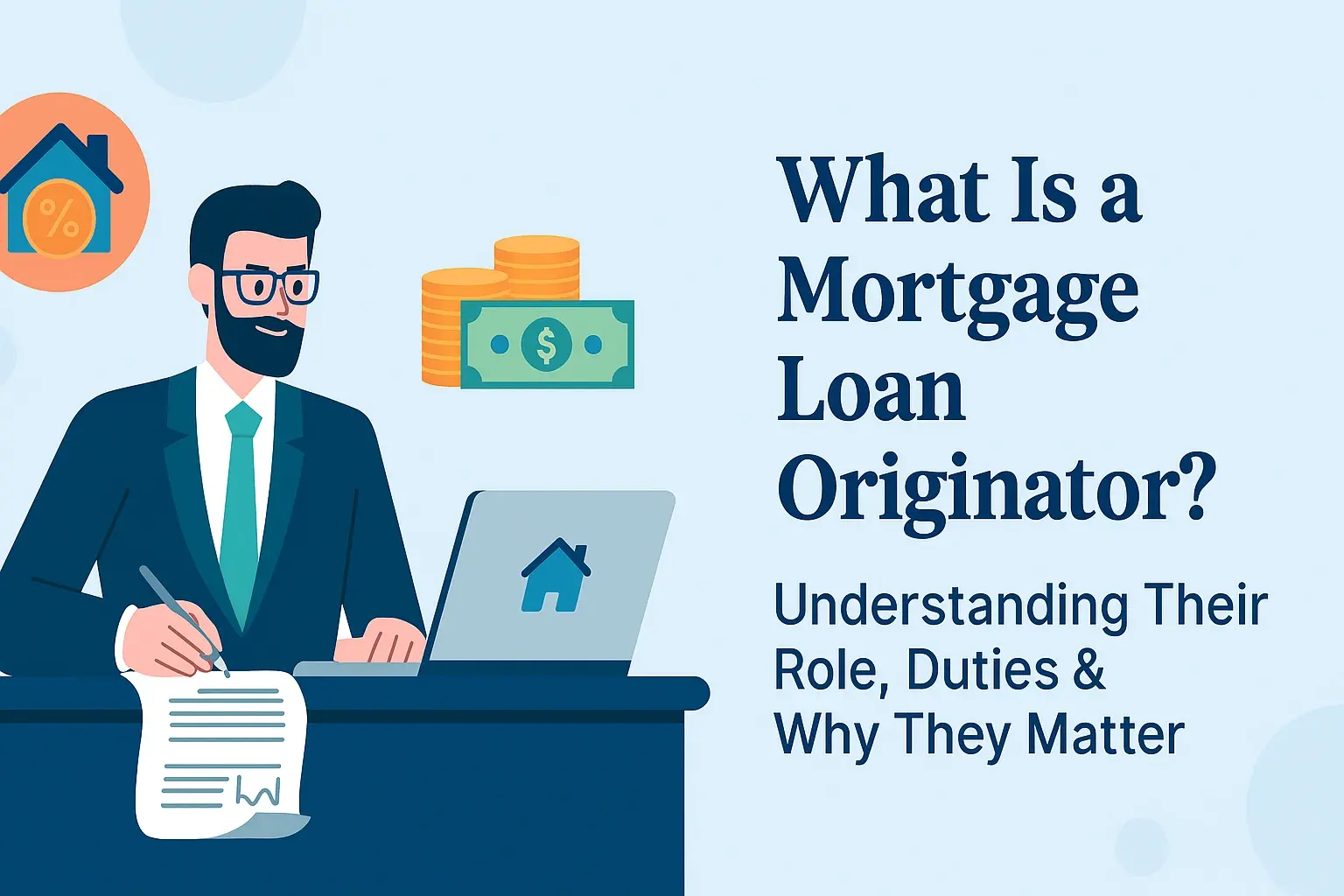-
Posted on: 04 Feb 2025

-
Understanding the Core: What is a Credit Score?
A credit score is a three-digit number that lenders use to assess your creditworthiness, essentially predicting how likely you are to repay borrowed money. It's a critical component of your financial health, influencing everything from loan approvals to interest rates. Everfi's educational approach aims to demystify this complex metric, providing clear, actionable insights for individuals to understand and improve their financial standing.
In the realm of personal finance, few metrics hold as much sway as the credit score. For many, the concept can seem abstract, a mysterious number generated by unseen algorithms. However, understanding what a credit score is, how it's calculated, and why it matters is fundamental to achieving financial stability and unlocking opportunities. Everfi, a leader in financial education, strives to make this understanding accessible, breaking down the complexities into digestible pieces. This post will delve into the best definition of a credit score, as illuminated by educational frameworks like Everfi's, and explore its profound impact on our financial lives, especially as we navigate the economic landscape of 2025.
Everfi's Approach to Credit Score Education
Everfi's educational philosophy centers on practical, real-world application. When it comes to credit scores, they don't just define the term; they dissect its components, illustrate its impact through relatable scenarios, and provide actionable steps for improvement. Their approach is characterized by:
- Clarity: Simplifying complex financial jargon into understandable language.
- Relevance: Connecting credit score concepts to everyday financial decisions.
- Actionability: Offering concrete strategies and tools for building and maintaining good credit.
- Accessibility: Making educational resources available to a broad audience, often through partnerships with educational institutions and community organizations.
This comprehensive educational strategy aims to empower individuals with the knowledge they need to make informed financial decisions, fostering long-term financial well-being. They recognize that a true understanding of a credit score goes beyond a simple definition; it involves grasping its lifecycle, its determinants, and its consequences.
Demystifying Financial Literacy
Everfi's core mission is to equip individuals with essential financial literacy skills. For many, credit scores represent a significant hurdle in their financial journey. By offering structured learning modules, interactive tools, and engaging content, Everfi breaks down the intimidation factor associated with credit. They emphasize that understanding your credit score isn't an insurmountable task but rather an achievable goal with the right guidance. Their materials often use storytelling and case studies to illustrate how credit scores affect real people in their pursuit of major life goals, such as buying a home, purchasing a car, or even securing certain employment opportunities. This focus on relatable narratives makes the abstract concept of a credit score tangible and personally relevant.
Interactive Learning and Tools
Beyond static definitions, Everfi champions interactive learning. This means engaging users through quizzes, simulations, and personalized feedback mechanisms. For credit scores, this could involve tools that allow users to see how different financial actions might impact their score, or simulations that mimic the loan application process. This hands-on approach fosters deeper comprehension and retention. Users aren't just passively receiving information; they are actively participating in their learning, which is crucial for mastering a subject as nuanced as credit scoring. The emphasis is on building confidence and competence through practice and exploration.
Partnerships for Wider Reach
Everfi's effectiveness is amplified through its extensive network of partners. By collaborating with schools, universities, non-profits, and corporations, Everfi ensures that its financial education programs, including those focused on credit scores, reach diverse populations. This widespread dissemination is vital for fostering a financially literate society. Whether it's a high school student learning about credit for the first time or an adult seeking to improve their existing score, Everfi's programs are designed to meet them where they are, providing tailored support and resources.
Unpacking the "Best" Definition: Key Components
The "best" definition of a credit score, as advocated by leading financial educators like Everfi, is one that is comprehensive, actionable, and empowering. It's more than just a number; it's a snapshot of your financial behavior over time.
At its core, a credit score is a numerical representation of your credit risk. It's a three-digit number, typically ranging from 300 to 850, that lenders and other institutions use to gauge how likely you are to repay borrowed money. This score is generated by credit bureaus (like Equifax, Experian, and TransUnion) based on the information contained in your credit report.
However, a truly effective definition goes deeper. It highlights that a credit score is:
- A Predictive Tool: It forecasts your future credit behavior based on your past financial actions.
- A Reflection of Financial Responsibility: It demonstrates your ability to manage debt responsibly.
- A Key to Financial Opportunities: A good score opens doors to better loan terms, lower interest rates, and even certain rental or employment opportunities.
- Dynamic and Malleable: It's not a fixed entity; it changes over time based on your ongoing financial habits.
Therefore, the best definition of a credit score is not just what it *is*, but what it *does* and how it can be *influenced*. It's a vital financial metric that reflects your history of borrowing and repaying, acting as a crucial indicator for lenders assessing the risk associated with extending credit to you.
Beyond the Number: Understanding Credit Risk
The numerical value of a credit score is its most visible aspect, but its true purpose lies in quantifying credit risk. Lenders use this score to estimate the probability that a borrower will default on their obligations. A higher score signifies lower risk, indicating a borrower who has historically managed debt responsibly. Conversely, a lower score suggests a higher risk, implying a greater chance of late payments or defaults. This risk assessment directly impacts the terms offered, such as interest rates and loan amounts. For instance, a borrower with a score of 750 might qualify for a mortgage at a 6% interest rate, while a borrower with a score of 600 might face an 8% rate or even be denied the loan altogether. This differential is the practical manifestation of credit risk.
The Credit Report Foundation
It's impossible to discuss a credit score without acknowledging its bedrock: the credit report. A credit report is a detailed record of your borrowing and repayment history, compiled by credit bureaus. It includes information such as:
- Personal Information: Name, address, Social Security number, date of birth.
- Credit Accounts: Details of credit cards, loans (mortgages, auto loans, student loans), and other lines of credit, including the lender, account number, date opened, credit limit, current balance, and payment history.
- Public Records: Information from court records, such as bankruptcies, liens, and judgments.
- Inquiries: A record of who has accessed your credit report.
The credit score is derived from the data within this report. Any inaccuracies or negative information on the credit report can significantly impact the score. Therefore, understanding the credit report is a prerequisite to understanding the credit score. Everfi often emphasizes the importance of regularly reviewing one's credit report for errors, as these can unfairly depress a credit score and hinder financial progress.
The Role of Credit Bureaus
Credit bureaus, also known as credit reporting agencies, are private companies that collect and maintain credit information on individuals. The three major bureaus in the United States are Equifax, Experian, and TransUnion. They gather data from lenders, creditors, and public records to create credit reports. These reports are then used by scoring models (like FICO and VantageScore) to generate credit scores. While the bureaus collect the data, the scoring models interpret it to produce the numerical score. It's important to note that different scoring models may produce slightly different scores for the same individual, as they may weigh certain factors differently. Everfi's educational materials often highlight the importance of understanding which scoring model a particular lender uses, as this can sometimes influence lending decisions.
Why Credit Scores Matter in 2025 and Beyond
The significance of a credit score extends far beyond simply qualifying for a loan. In 2025, a strong credit score remains a cornerstone of financial well-being, impacting a wide array of financial decisions and opportunities.
Access to Credit: This is the most obvious impact. Lenders use credit scores to determine whether to approve loan applications for mortgages, auto loans, personal loans, and credit cards. A higher score generally means a higher likelihood of approval.
Interest Rates: Perhaps even more crucial than approval is the interest rate offered. A higher credit score typically translates to lower interest rates. Over the life of a large loan, such as a mortgage, this can save you tens of thousands of dollars. For example, a difference of just 1-2% in an interest rate on a 30-year mortgage can amount to a substantial sum.
Rental Applications: Landlords often check credit scores to assess the reliability of potential tenants. A good score can make it easier to secure desirable rental properties, especially in competitive markets.
Insurance Premiums: In many states, insurance companies use credit-based insurance scores to help set premiums for auto and homeowners insurance. Individuals with higher credit scores often pay less for insurance.
Utility Deposits: Utility companies (electricity, gas, water) may require a security deposit if you have a low credit score or no credit history. A good score can help you avoid these upfront costs.
Employment Opportunities: Some employers, particularly in financial services or positions requiring handling of sensitive information, may review a candidate's credit report as part of the background check. While they don't see the score itself, negative information on the report could impact hiring decisions.
Negotiating Power: A strong credit score gives you more leverage when negotiating terms with lenders and service providers. You are in a better position to shop around for the best deals.
In 2025, with evolving economic conditions and increasing reliance on digital financial services, the importance of a robust credit score is only amplified. It serves as a digital fingerprint of your financial trustworthiness.
The Cost of Poor Credit in 2025
The financial ramifications of a low credit score are significant and can compound over time. In 2025, individuals with poor credit may face:
- Higher Loan Payments: As mentioned, interest rates can be substantially higher, increasing monthly payments and the total cost of borrowing. For a $300,000 mortgage, a 1% difference in interest rate can mean paying over $100,000 more in interest over 30 years.
- Loan Denials: Access to essential credit, like a mortgage to buy a home or a loan for a reliable vehicle, may be denied outright.
- Increased Insurance Premiums: Auto insurance premiums can be significantly higher for drivers with lower credit scores. Studies consistently show a correlation between credit-based insurance scores and claims frequency.
- Higher Security Deposits: For utilities, cell phone plans, and even some rental agreements, a poor credit history might necessitate substantial upfront deposits, tying up personal capital.
- Limited Housing Options: Many landlords view a credit check as a primary indicator of a tenant's reliability. A low score can restrict choices to less desirable properties or even lead to outright rejection.
- Employment Barriers: Certain jobs, especially those involving financial responsibility or access to sensitive data, may be off-limits to individuals with a history of financial mismanagement reflected in their credit report.
These costs aren't just theoretical; they represent tangible financial burdens that can hinder wealth building and limit life opportunities. Everfi's educational approach aims to highlight these costs so individuals understand the urgency and importance of managing their credit effectively.
Credit Scores and Financial Goals
Achieving major financial goals in 2025 often hinges on a strong credit score. Consider these scenarios:
- Homeownership: Securing a mortgage is a primary goal for many. A good credit score is almost always a prerequisite, and a great score can mean the difference between affording a home and being priced out due to high interest rates.
- Vehicle Purchase: Buying a car, whether new or used, typically involves financing. A favorable auto loan rate can save hundreds or even thousands of dollars over the loan term.
- Starting a Business: Entrepreneurs often need loans or lines of credit to launch and grow their ventures. A solid credit history demonstrates financial stability and can be crucial for securing business funding.
- Education: While student loans are common, a good credit score can influence the terms of private student loans or federal loan options.
- Emergency Fund Access: In unexpected financial emergencies, access to a personal loan or a credit card with favorable terms can be a lifeline. A good score ensures this access is available and affordable.
Everfi's programs often frame credit score education within the context of achieving these life milestones, making the learning process more motivating and results-oriented.
The Pillars of Your Credit Score: Key Influencing Factors
Understanding what influences your credit score is the first step toward improving it. Credit scoring models, like FICO and VantageScore, weigh several key factors. While the exact percentages can vary slightly between models, the general categories remain consistent.
Payment History (Approx. 35% of FICO Score)
This is the single most important factor. It reflects whether you pay your bills on time.
- On-time payments: Consistently paying your credit accounts by the due date builds a positive payment history.
- Late payments: Even a single late payment can significantly lower your score, especially if it's more than 30 days past due. The severity increases with the length of the delinquency (30, 60, 90+ days).
- Collections and charge-offs: Accounts sent to collections or charged off by the lender have a severe negative impact.
- Public records: Bankruptcies, judgments, and liens are highly damaging.
Example: If you have a credit card with a $500 balance and pay it on time every month for a year, this positively impacts your payment history. If you miss three payments on that same card, it will severely damage your score.
Credit Utilization Ratio (Approx. 30% of FICO Score)
This measures how much of your available credit you are using. It's calculated by dividing your total outstanding balances by your total credit limits.
- Keep it low: Experts recommend keeping your credit utilization ratio below 30%, and ideally below 10%, for the best scores.
- Individual card utilization: It's also beneficial to keep utilization low on individual credit cards, not just your overall utilization.
- Impact of high utilization: Using a large portion of your available credit can signal financial distress to lenders.
Example: You have two credit cards. Card A has a $1,000 balance and a $2,000 limit (50% utilization). Card B has a $500 balance and a $1,000 limit (50% utilization). Your overall utilization is $1,500 / $3,000 = 50%. Lowering these balances, perhaps to $300 on Card A and $200 on Card B, would bring your overall utilization to $500 / $3,000 = 16.7%, significantly improving your score.
Length of Credit History (Approx. 15% of FICO Score)
This factor considers the age of your oldest credit account, the age of your newest account, and the average age of all your accounts.
- Longer is better: A longer credit history generally contributes to a higher score, as it provides more data for lenders to assess your behavior.
- Avoid closing old accounts: Unless there's a compelling reason (like a high annual fee), keeping older, well-managed accounts open can help maintain a longer average age of accounts.
Example: If your oldest credit card account was opened 10 years ago and your newest 2 years ago, your average credit history length will be higher than someone whose oldest account is only 3 years old.
Credit Mix (Approx. 10% of FICO Score)
This refers to the variety of credit accounts you have, such as credit cards (revolving credit) and installment loans (mortgages, auto loans, personal loans).
- Demonstrates management ability: Having a mix of credit types can show that you can manage different kinds of debt responsibly.
- Not a primary driver: This factor has a relatively small impact, and it's generally not advisable to open new accounts solely to improve your credit mix.
Example: Having both a credit card and an auto loan demonstrates a mix of revolving and installment credit.
New Credit (Approx. 10% of FICO Score)
This factor looks at how many new credit accounts you've opened recently and how many hard inquiries you have on your credit report.
- Limit applications: Applying for too much credit in a short period can signal risk. Each hard inquiry (when a lender checks your credit for a loan or credit card application) can slightly lower your score.
- Shopping for rates: Credit scoring models are designed to distinguish between rate shopping for a mortgage or auto loan (which can involve multiple inquiries within a short window and have less impact) and applying for multiple credit cards.
Example: Applying for three new credit cards within a single month will likely have a more negative impact than applying for a mortgage and an auto loan within a week of each other.
Understanding Hard vs. Soft Inquiries
It's crucial to differentiate between hard and soft inquiries. A hard inquiry occurs when a lender checks your credit report as part of a credit application (e.g., for a loan or credit card). These can slightly lower your score. A soft inquiry occurs when you check your own credit, a potential employer checks your credit (with your permission), or a company pre-approves you for an offer. Soft inquiries do not affect your credit score. Everfi often educates users on this distinction to alleviate concerns about checking their own credit reports.
Decoding Credit Score Ranges: What Your Number Says
Credit scores typically fall within a range, most commonly 300 to 850. While the exact thresholds for what constitutes "good," "fair," or "excellent" can vary slightly by scoring model and lender, there are generally accepted benchmarks. Understanding these ranges helps you gauge your financial standing and identify areas for improvement.
Here's a common breakdown of credit score ranges and their implications:
Score Range Category Implications 800-850 Exceptional Excellent credit. You'll likely qualify for the best loan terms, lowest interest rates, and top credit card rewards. Lenders see you as a very low-risk borrower. 740-799 Very Good Strong credit. You'll qualify for most loans and competitive interest rates. You are considered a low-risk borrower. 670-739 Good Acceptable credit. You'll likely be approved for loans, but interest rates may be slightly higher than for those with very good or exceptional credit. This is often considered the benchmark for many lenders. 580-669 Fair Limited credit. You may face challenges getting approved for loans, and if approved, interest rates will likely be higher. Some lenders may require a co-signer or a larger down payment. 300-579 Poor Very risky borrower. Approval for credit will be difficult, and if obtained, interest rates will be very high. May require significant effort to rebuild credit. What Lenders Look For
Lenders use credit scores as a primary tool to assess risk. A score in the "Good" to "Exceptional" range (typically 670+) generally signals to lenders that you are a reliable borrower who manages debt responsibly. This leads to:
- Higher Approval Rates: You're more likely to get approved for mortgages, auto loans, personal loans, and credit cards.
- Lower Interest Rates: This is a major benefit. A lower interest rate means lower monthly payments and significantly less interest paid over the life of a loan. For example, on a $200,000 mortgage over 30 years, a 1% difference in interest rate can save you over $60,000.
- Better Credit Card Offers: You'll have access to premium rewards cards, balance transfer offers, and higher credit limits.
- Favorable Terms: Lenders are more willing to offer flexible repayment terms and fewer fees to borrowers with strong credit.
Conversely, scores in the "Fair" or "Poor" categories signal higher risk. Lenders may compensate for this risk by:
- Denying Applications: Some lenders may have strict minimum score requirements.
- Charging Higher Interest Rates: This is the most common way lenders mitigate risk. A higher rate ensures they are compensated for the increased chance of default.
- Requiring Collateral or Co-signers: For riskier borrowers, lenders might ask for assets to secure the loan or a co-signer with good credit to guarantee repayment.
- Offering Lower Credit Limits: If approved for a credit card, the limit may be significantly lower than for someone with excellent credit.
Understanding Your Credit Report for Score Improvement
While the score is a number, the credit report is the data behind it. To improve your score, you need to understand what's in your report. Everfi's approach often includes guiding users on how to obtain and interpret their credit reports from the three major bureaus (Equifax, Experian, TransUnion). Key areas to scrutinize include:
- Payment History: Ensure all payments are accurately reported as on time. Dispute any late payments that were made on time.
- Credit Utilization: Check the balances on your revolving credit accounts (credit cards) and compare them to your credit limits.
- Account Age: Note the age of your oldest and newest accounts.
- Public Records: Verify the accuracy of any bankruptcies, liens, or judgments.
- Inquiries: Review the list of recent hard inquiries.
Identifying errors is crucial. The Fair Credit Reporting Act (FCRA) gives consumers the right to dispute inaccurate information on their credit reports. Correcting errors can lead to a significant boost in your credit score.
Strategies for Building and Improving Your Credit Score
Improving your credit score is a marathon, not a sprint. It requires consistent good financial habits. Here are actionable strategies, often highlighted in Everfi's educational programs, to build and enhance your creditworthiness:
1. Pay All Bills On Time, Every Time
As the most influential factor, timely payments are paramount.
- Set up automatic payments: For recurring bills, automate payments to avoid missing due dates.
- Use calendar reminders: If automatic payments aren't feasible, set up calendar alerts a few days before the due date.
- Prioritize: If you're struggling to pay all bills, prioritize secured debts (like mortgages and car loans) and then credit cards.
2. Reduce Your Credit Utilization Ratio
Aim to keep your utilization below 30%, and ideally below 10%.
- Pay down balances: Focus on paying down credit card balances.
- Request a credit limit increase: If you have a good payment history with a card issuer, you might be able to request a higher credit limit, which can lower your utilization ratio if your spending remains the same.
- Spread out spending: If possible, avoid maxing out any single card.
3. Avoid Opening Too Many New Accounts at Once
While new credit can eventually help your credit mix and history length, applying for multiple accounts in a short period can signal risk.
- Be strategic: Only apply for credit when you genuinely need it.
- Space out applications: If you need to open new accounts, do so gradually over several months or years.
4. Keep Old, Well-Managed Accounts Open
Closing old credit accounts can shorten your average credit history length and reduce your overall available credit, potentially increasing your utilization ratio.
- Maintain a small balance: If an old card has no annual fee, consider making a small purchase on it occasionally and paying it off immediately to keep it active.
- Check for fees: If an old account has a high annual fee and you don't use it, weigh the benefits against the cost.
5. Dispute Errors on Your Credit Report
Inaccurate information can unfairly lower your score.
- Obtain your reports: Get free copies of your credit reports from AnnualCreditReport.com.
- Review carefully: Look for any inaccuracies in personal information, account details, payment history, or inquiries.
- File disputes: Contact the credit bureau and the creditor directly to dispute any errors.
6. Consider a Secured Credit Card or Credit-Builder Loan
These tools are specifically designed for individuals with limited or no credit history, or those rebuilding credit.
- Secured credit card: You provide a cash deposit that serves as your credit limit. Responsible use and timely payments are reported to the credit bureaus.
- Credit-builder loan: You make payments on a small loan, but the funds are held in an account and released to you after you've paid off the loan. This demonstrates consistent repayment behavior.
Step-by-Step Guide to Rebuilding Credit
- Obtain your credit reports: Visit AnnualCreditReport.com to get your free reports from Equifax, Experian, and TransUnion.
- Analyze your reports: Identify negative marks, high utilization, and any inaccuracies.
- Dispute errors: Contact credit bureaus and creditors to resolve any incorrect information.
- Prioritize on-time payments: Make at least the minimum payment on all accounts by the due date.
- Reduce credit utilization: Focus on paying down credit card balances to below 30% of their limits.
- Consider a secured card or credit-builder loan: If your credit is very thin or poor, use these tools responsibly.
- Be patient: Credit rebuilding takes time. Consistent positive behavior over months and years is key.
Common Credit Score Myths Debunked
Misconceptions about credit scores are widespread. Understanding the truth behind these myths can save you from making costly financial mistakes. Everfi's educational approach often includes addressing these common fallacies.
Myth 1: Checking Your Own Credit Score Hurts It
Fact: Checking your own credit score or report is considered a "soft inquiry" and does not affect your score. You can and should check your credit reports regularly (at least annually) for accuracy and to monitor your progress. It's only when a lender checks your credit as part of a loan application (a "hard inquiry") that it can have a minor, temporary impact.
Myth 2: Closing Old Credit Cards Improves Your Score
Fact: In most cases, closing old credit cards can actually hurt your score. This is because it reduces your overall available credit (potentially increasing your credit utilization ratio) and shortens the average age of your credit accounts, both of which are negative factors. Unless an old card has a high annual fee and you don't use it, it's generally better to keep it open and use it sparingly.
Myth 3: You Need to Carry a Balance to Build Credit
Fact: This is a persistent myth. You do not need to carry a balance on your credit cards to build credit. In fact, carrying a balance often means paying interest, which is an unnecessary cost. The key to building credit is making on-time payments and keeping your credit utilization low. Using your card for small purchases and paying it off in full each month is the most effective and cost-efficient strategy.
Myth 4: Your Credit Score is Fixed and Cannot Be Changed
Fact: Your credit score is dynamic and can absolutely be improved. By consistently practicing good financial habits – paying bills on time, keeping balances low, and monitoring your credit report for errors – you can significantly increase your score over time. Rebuilding credit takes time and effort, but it is achievable.
Myth 5: All Credit Scores Are the Same
Fact: There are different credit scoring models (e.g., FICO, VantageScore) and various versions of these models. Lenders may use different scores for different purposes. Additionally, your score can vary slightly depending on which credit bureau's data is used. While the core factors influencing scores are similar, the exact numbers can differ.
Myth 6: Debit Cards Affect Your Credit Score
Fact: Debit cards are linked directly to your bank account. Transactions made with a debit card do not involve borrowing money and therefore do not impact your credit report or credit score. Only credit products like credit cards and loans affect your credit.
Leveraging Everfi Resources for Enhanced Credit Score Literacy
Everfi offers a wealth of resources designed to empower individuals with the knowledge and skills to understand and manage their credit scores effectively. These resources are often accessible through partnerships with schools, financial institutions, and community organizations, making them widely available.
Interactive Modules and Courses
Everfi's platform features engaging, self-paced modules that cover various aspects of personal finance, including credit scores. These modules typically include:
- Clear Explanations: Breaking down complex topics like credit reports, scoring models, and the factors that influence scores.
- Real-World Scenarios: Presenting relatable examples of how credit scores impact daily life and major financial decisions.
- Quizzes and Assessments: Testing comprehension and reinforcing learning.
- Actionable Tips: Providing practical advice for building and improving credit.
These modules are designed to be accessible to learners of all ages and financial backgrounds, from teenagers just starting to learn about credit to adults looking to improve their financial health.
Financial Literacy Tools and Simulations
Beyond basic modules, Everfi provides tools that allow users to apply their knowledge. This might include:
- Credit Score Simulators: Tools that help users understand how different financial actions (e.g., paying down a balance, opening a new account) might affect their credit score.
- Budgeting Tools: Helping users manage their income and expenses, which is a foundational step for responsible credit management.
- Loan Calculators: Demonstrating the impact of interest rates and loan terms on overall repayment costs.
These interactive elements transform passive learning into active engagement, fostering a deeper understanding and practical application of financial concepts.
Partnerships with Educational Institutions
Everfi's strength lies in its ability to integrate financial education into existing curricula. By partnering with K-12 schools, colleges, and universities, they ensure that students receive foundational financial literacy training, including credit score education, before they enter the workforce or take on significant debt. This proactive approach aims to prevent common financial pitfalls and build a generation of financially capable individuals.
Community and Corporate Programs
Everfi also extends its reach through community-based organizations and corporate wellness programs. This allows adults to access valuable financial education resources, often tailored to specific needs, helping them navigate complex financial landscapes, improve their creditworthiness, and achieve their financial goals.
Conclusion: Mastering Your Financial Future
Unraveling the best definition of a credit score, as championed by educational leaders like Everfi, reveals it to be far more than a mere number. It is a dynamic, powerful indicator of your financial trustworthiness, a critical determinant of your access to opportunities, and a direct influence on the cost of borrowing. In 2025 and beyond, a strong credit score remains an indispensable asset for achieving major life goals, from homeownership to financial security.
Understanding the key factors that shape your credit score—payment history, credit utilization, credit history length, credit mix, and new credit—empowers you to take control. By consistently paying bills on time, diligently managing your debt levels, and monitoring your credit reports for accuracy, you can actively build and improve your creditworthiness. Remember that myths surrounding credit scores abound, but by relying on factual information and educational resources, you can navigate this landscape with confidence.
Leveraging comprehensive resources, such as those provided by Everfi, can demystify the process and provide the practical tools needed for success. Start today by reviewing your credit reports, understanding your current score, and implementing strategies for improvement. Mastering your credit score is a significant step toward mastering your financial future, opening doors to better financial products, lower costs, and greater peace of mind.











